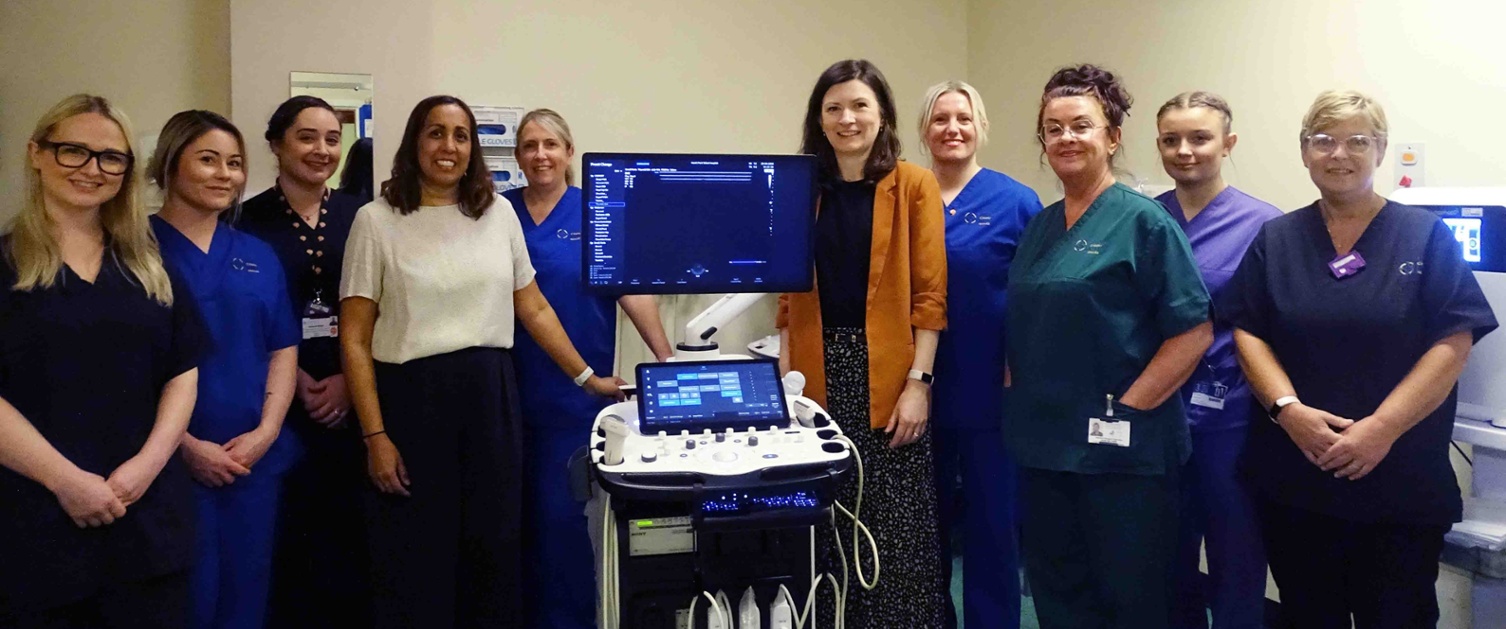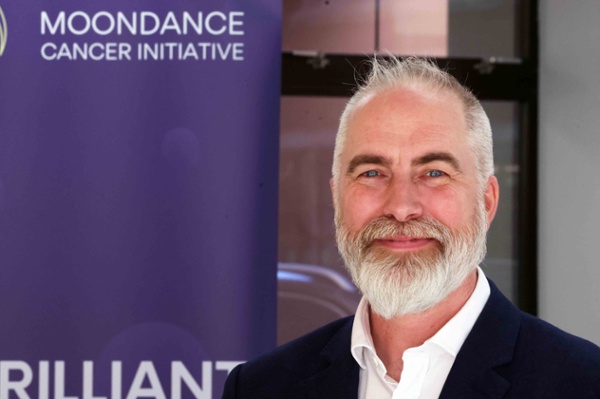Pioneering Rapid Diagnosis Centre to expand after successful two-year pilot

A pioneering centre that provides a fast diagnosis for people with symptoms that could be cancer is expanding after a successful pilot.
The Rapid Diagnosis Centre at Neath Port Talbot Hospital now offers one-stop neck lump investigations, along with an extended biopsy service and an additional vague symptoms clinic, all on a permanent basis.
Main photo: some of the neck lump clinic team. See end of release for full caption.
It has been made possible through an additional £390,000 a year investment by Swansea Bay University Health Board.
This followed a two-year pilot funded by Welsh not-for-profit organisation Moondance Cancer Initiative.
The Moondance funding of £700,000 allowed the RDC’s single-visit approach to be extended to investigating suspected colorectal cancer and neck lumps, along with other key improvements.
These improvements included a radiotherapist clinic within the malignancy of unknow origin (MUO) service, along with a new biopsy service.
The latter meant interventional radiological procedures such as bone and liver biopsies, at the time only carried out in Singleton and Morriston, could be undertaken in Neath Port Talbot too.
RDC coordination manager Helen Gray said: “Up until the end of March, the neck lump pathway saw 505 patients.
“Out of these, 59 patients had a variety of cancer diagnoses. That is a rate of 11.7 per cent, which is very high.”
Consultant head and neck radiologist Dr Shaheena Sadiq added: “The concept of the clinic was to build a complete framework around the patient - integrating radiology, ENT and other secondary care and nursing colleagues, to fully support the patient along this pathway.
“That makes it unique.”
Ongoing health board funding has also been confirmed for the biopsy service. This is being extended to include patients with lymphadenopathy, which is the swelling of the lymph nodes around the body.
Helen said: “Patients presenting with lymphadenopathy traditionally bounce around the system as they could fall under any number of specialities.
 “We want to create a smooth pathway so they can come to us and have full nursing support during a potentially scary time. We are progressing with this, and we expect it to start soon.”
“We want to create a smooth pathway so they can come to us and have full nursing support during a potentially scary time. We are progressing with this, and we expect it to start soon.”
Dr Rob Orford (pictured), chief executive of Moondance Cancer Initiative, said: “Rapid diagnostic centres provide a critical diagnostic service in Wales, which is why we saw the importance in funding the expansion two years ago at Swansea Bay.
“Our funding allowed the health board to test and demonstrate the effectiveness of introducing additional pathways and services, which we’re delighted has proved successful for patients.
“This is a pivotal outcome for Swansea Bay. We hope it will provide a framework for other health boards to learn from to further improve diagnostic pathways and outcomes for patients.”
Another benefit of the additional Swansea Bay funding is to increase the number of vague symptom clinics from two to three a week.
GPs with concerns about patients who do not have the traditional red flag signs of cancer have been able to refer them to the RDC since it opened its doors in the summer of 2017.
They are usually seen in a vague symptoms clinic within a week. They are investigated and given the results or next steps all in one morning.
Should the patient be found to have cancer, they are referred to the relevant specialist team for assessment without any unnecessary delay. Others can be provided with the reassurance that all is okay.
The decision to increase the number of clinics followed a surge in referrals, from 50-60 a month pre-Covid to 70-80 by late last year.
That in turn led to a four-week wait, unprecedented for a centre that usually sees patients within days.
Helen added: “Without this additional funding, we know we would have a 16-17 week wait within a matter of weeks. But now we have enough capacity to meet the demand that we know is out there.”
RDC clinical lead Dr Heather Wilkes said, “None of this service innovation and subsequent proof of value would have been possible without the funding and support from Moondance Cancer Initiative.
“The two-year funded pilot came to its agreed end, but it enabled us to establish and future-proof our RDC services. It is wonderful news for staff and patients that they are to continue.”
Pic shows (l-r) Rachel Morgan, MRI superintendent, radiology; Siobhan Evans, clinical nurse specialist, RDC; Hannah David, CT superintendent, radiology; Dr Shaheena Sadiq, consultant, radiology; Susan Blackmore, Macmillan clinical nurse specialist, RDC; Dr Lydia Guthrie, consultant radiologist, radiology; Jessica Bowden, clinical nurse specialist, RDC; Julie Williams, health care support worker, RDC; Sophie Thomas, health care support worker, nurse bank; Cheryl Bozilovic, radiology health care support worker.
Rydym yn croesawu gohebiaeth a galwadau ffôn yn y Gymraeg neu'r Saesneg. Atebir gohebiaeth Gymraeg yn y Gymraeg, ac ni fydd hyn yn arwain at oedi. Mae’r dudalen hon ar gael yn Gymraeg drwy bwyso’r botwm ar y dde ar frig y dudalen.
We welcome correspondence and telephone calls in Welsh or English. Welsh language correspondence will be replied to in Welsh, and this will not lead to a delay. This page is available in Welsh by clicking ‘Cymraeg’ at the top right of this page.